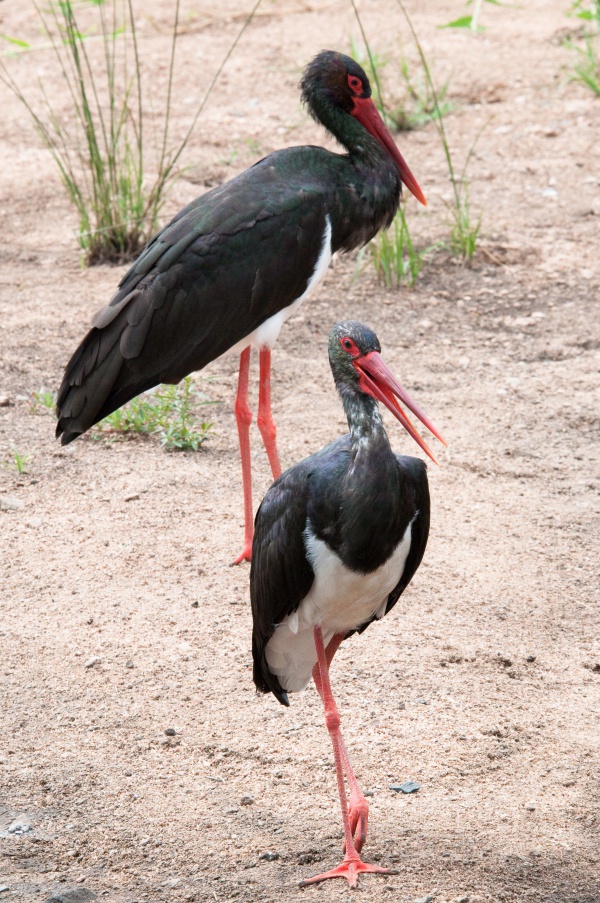Facts About Black stork
The black stork is a striking member of the stork family, Ciconiidae, known for its predominantly black feathers, white belly, red legs, and red beak. This sizable bird breeds across Europe and extends its range to the Pacific, migrating to Africa and Asia with the changing seasons. In contrast to the more familiar white stork, the black stork is quite reclusive, often preferring to stay hidden. It is typically observed alone in marshy areas where it hunts for amphibians, fish, and insects.
When it comes to nesting, black storks favor the seclusion of forest trees. Breeding pairs construct their nests high up, laying between 2 to 5 eggs. These eggs take about 32 to 38 days to hatch. Despite being classified as a species of least concern, black storks still face threats such as habitat loss and hunting.
Scientifically, the black stork was first described by Linnaeus and belongs to the genus Ciconia. It is considered one of the more primitive members of this genus, with fossil evidence even found in Kenya. In terms of size, the black stork is quite large, boasting a wingspan of 145-155 cm and weighing around 3 kg. Its distinctive appearance includes black plumage, red legs, and a sharp red beak. Juveniles resemble adults but have browner feathers.
Geographically, black storks are found in Europe, Asia, and Africa. They prefer wooded areas for breeding and freshwater habitats for feeding. They migrate to Africa and Asia to avoid the winter cold. These birds are usually seen alone or in pairs and possess a wider range of calls compared to the white stork. Their breeding season involves elaborate courtship displays, constructing nests in trees, and laying eggs that hatch within 32-38 days. The young leave the nest after about 60-71 days.
Black storks primarily feed on fish and are often seen wading through shallow waters, though they sometimes forage on land as well. They even follow large mammals to find food. The species faces several threats, including habitat loss, hunting, and environmental changes. Conservation efforts are underway, with international agreements and plans in place to improve their wintering conditions.

 Serbia
Serbia